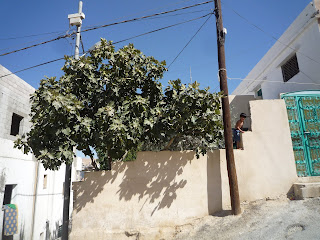But wait, you probably ask, this all seems too easy. Can co-existence really be as simple as throwing everyone together and doing a few ice breakers? The answer is, of course, no. This is a really special place, set aside from all other influences in the middle of the desert. The second thing is that until one night this week there had been no explicit talking about the conflict, and where everyone stood in it. This is not only a natural thing for us to do, but is by design in the program. It is incredibly important for us to develop our personal relationships before we start talking about these things. An altercation caused by an emotional disagreement with someone you have just met can lead to a permanent rift, while the same thing with someone you have already become close with often leads to becoming even closer. This, at least, is the story that keeps coming back to us from former students here.
And so, at PELS last Sunday, we spent the entire three hours going over the principles of compassionate listening and laying out guidelines for talking about sensitive issues, and then talking about conflict mediation theory. I could see that to many of us it felt like going to a workshop on how to build a bookshelf and getting a lecture on the basic theories of geometry and physics. “Let’s get down to it! Let’s scuffle and hammer this thing out!” This opinion was voiced by a couple of people present – why are we dealing with such abstract things! We’ve talked about conflict for three hours and not a single word about the Middle East. The answer given these people was simple – “Patience. We’ll get to that soon enough, as you will as a matter of course. For now we must learn how to talk about these things, before we can actually do it.” And sure enough, they were right – but first to Jerusalem!
My parents were in town this week hiking with the One Family Fund to raise money for victims of terrorism. If anyone who gave them money is reading this, thank you for sending my parents to me! I got to go up to Jerusalem last weekend and stay with them, taking part in the One Family Fund activities. This included a five hour guided tour of the old city, lots of good food, and getting to meet some great people. We also spent a fair bit of time with some family friends who are in Israel for a year, living in Jerusalem. Getting an insight into what it’s like to be a liberal North American in the midst of such an intense place was interesting. Jerusalem is beautiful, endlessly fascinating, but undeniably heavy.
Here is a view of the sunrise on a hike with my parents, taken over the gulf of Eilat with Jordan in the distance.
And here, of course, is ha Horim Sheli!
But here’s the thing that made my week so interesting: You go to Jerusalem, and you can see it all from a single vantage point. You see the old city, and beyond that, the Arab neighborhoods of east Jerusalem, still almost entirely separate from the Jewish areas even though Israel officially annexed them. You look into the distance and you can see that beyond such and such a point is the West Bank. You realize that THIS is what the entire ruckus is about, right here. As the tour guide pointed out, according to a mixture of biblical and secular history, the mount where the dome of the rock stands was the place where Abraham would have sacrificed Isaac/Ishmael, then the place of the first temple, then the second temple, the seat of the Jewish Empire, then conquered by Muslims, Christian Crusaders, Muslims again, and so on and on. This is disputed territory. Even within religions the different sects muscle each other around the real estate.
I then went for dinner with my parents, and a number of speakers were telling their heart-wrenching stories about losing their children to terrorism. There is something entirely intractable about this kind of loss and pain – something that can never be reconciled with politics. You can only weep. Coming home from the dinner at around midnight, I came across the first circle in the quad explicitly discussing the conflict. This was prompted by watching the movie Bil’in Habibti, about the protests at the separation barrier that have happened every week since 2005 in the village of Bil’in in the West Bank. This is probably the most egregious case of Israel simply using the barrier to expropriate land for settlements, uprooting olive trees, and disregarding the Palestinian residents. The result has been the formation of a non-violence resistance movement at Bil’in. I mostly sat and listened as people poured their hearts into the discussion, and I watched as a number of people applied the and explicitly talked about the stuff we learned at PELS.
Anyway, it is now the weekend, time for relaxing and catching up. I’ve been very busy this week, and need to catch up on some readings – about how to store excess renewable energy production for future use, about ancient agriculture in the desiccated Uvda Valley, about Health Impact Assessments, and about mycorrhiza! Am I overwhelmed? Yes :-). Am I having fun? You bet
hmmm....here's a story I wanted to fit in but couldn't find a place for:
In a cab ride recently, the driver asked me if I didn't go into the army in Canada. I said no. He looked shocked - why not? he demanded. Very few people do, I answered, it's not a big army. He tried to understand, and just shook his head. .















